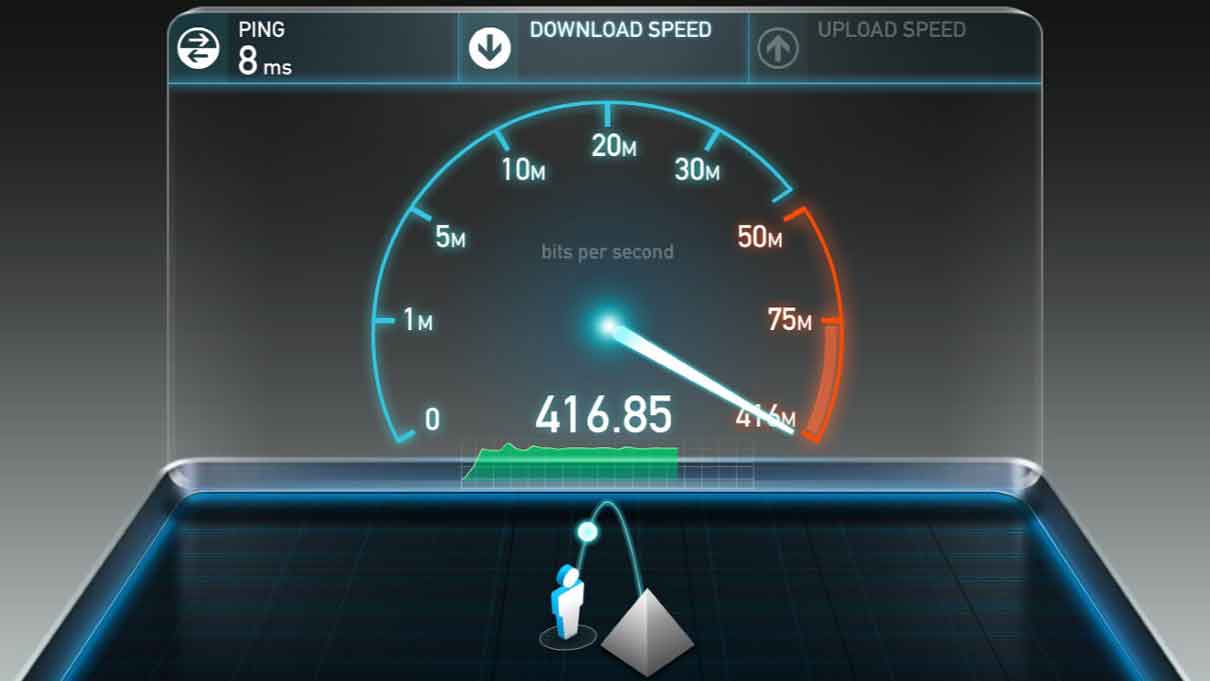Internet Speed Max
Internet bandwidth is often used interchangeably with the speed of the internet connection. This may lead you to believe that an increase in bandwidth will inevitably result in better internet speed. However, the truth is a little more complicated than that.

Connection Bandwidth vs Connection Speed
The bandwidth and speed of your internet connection are two distinct things. Think of the bandwidth speed test as a pipeline through which you upload or download data from the internet. The larger the pipe is, the greater the amount of data that can be transferred.
So if you have a 10 MBps connection, you can download 10MBs of data per second. This is mostly the case in theory and the actual download rate is usually lower.
See Also: What is 5G LTE
If you increase the connection bandwidth from 10MBps to 20MBps, you can transfer twice the amount of data at the same time. So the larger is the pipe, the more is the amount of data that can flow through it per second.
Connection speed, on the other hand, is the speed at which data transfer takes place. To better understand the distinction, consider this example. You are traveling on a road in a car. This car can only travel at a maximum speed of 150 miles per hour.
Now if the car has a clear lane with no traffic, it still won’t travel above this speed. If the car travels on a road with 4 or even 10 lanes, its maximum speed is going to remain the same.
The speed of the car is your connection speed and the lanes represent the bandwidth. The actual internet speed connection depends on several other factors. It is affected by the hardware at both ends of the connection, the services you are trying to access, the size of data transfer, and so on.
How Can Bandwidth Affect Speed?
There are still several scenarios where bandwidth can affect your connection speed. As mentioned above, the bandwidth is like a pipe that is used for data transfer.
If you have to transfer a large amount of data and the pipe is also large enough, the transfer takes place quickly. But if the pipe is not large enough, the data transfer may take more time.
See Also: How 5G and Artificial Intelligence are intertwined
For instance, say you are trying to download a file that is 10 MBs in size. If you have a 10 MBps connection, it would ideally take you only 1 second to download the file. If the connection bandwidth is 5 MBps, it will take you 2 seconds to download the same file.
Similarly, it will take 10 seconds or so to download the file on a 1 MBps connection. In this way, bandwidth can affect the speed of your internet connection. In effect, when bandwidth is limited compared to the size of data transfer, it has a throttling effect.
See Also: Internet of skills
How does bandwidth work?
To better understand this, let us reconsider the example used above. The car mentioned above has a top speed of 150 miles per hour. If it has a clear lane, it can achieve this top speed with ease. But if there is traffic congestion, it may have to wait in line behind other cars.
This will force the driver to reduce the speed of the car, taking more time to cover the same distance. This problem can be resolved by adding more lanes to the road. If there are four cars and four lanes, each car can travel in its lane and travel at the top speed.
This is how bandwidth works. Increasing the bandwidth does not essentially increase the speed of the car. It simply lets the car have enough space to achieve optimal speed.
So when you have a single machine or device using the internet connection, it may receive the maximum bandwidth. This results in better download and upload speeds.
As you add more devices, machines, and users to the connection, the bandwidth available to everyone decreases. This is how bandwidth affects the speed of your connection.
See Also: How to speed up your broadband internet connection
Wrapping It Up
Bandwidth is often confused with internet speed, which is understandable. More bandwidth does allow for more data transfer in the same amount of time. But beyond a certain limit, adding more bandwidth does not affect data transfer either.
When you are seeding data from another user, the limits of that user’s hardware often dictate the maximum transfer rate. In such a case, adding more bandwidth will not affect the download or upload rate. The hardware you use, the service or server you are accessing, and various connectivity issues can also affect speed.
This is why it is important to identify the bottlenecks of your connection before you decide to increase bandwidth. It may be that the bottlenecks lie elsewhere and you don’t need to pay more for a larger bandwidth after all.
Emily Jacobs is Happiness Ambassador for SpeedCheck.org. She loves to write the latest technology trends and loves to share her knowledge through her articles.
